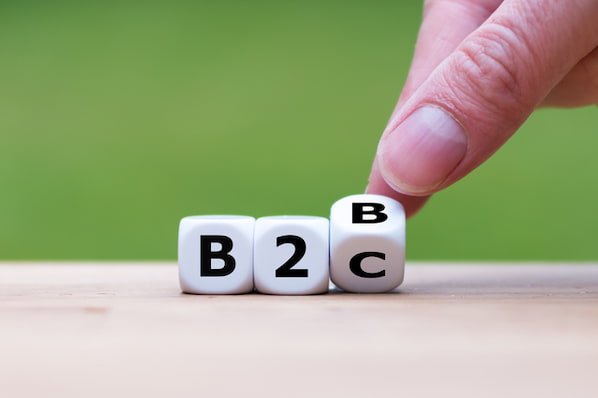How B2B is Evolving to B2C

It is no secret that how business interact with customers has changed over the past five years. How customers and businesses find the products they need has transitioned from trade magazines, conferences, and direct sales to internet searches.
In an effort to keep up with the modern digital commerce consumer, brands find themselves needing to re-focus their approach and transition from B2B to B2C.
The current global business model sees manufacturers, wholesalers and retailers all aiming for profits and consumers demanding better pricing. Brands are going out on their own in a bid to improve margins and enhance the customer experience.
Businesses that choose to transition from a B2B to a B2C find that this transition has many benefits. Allowing them to get Instant feedback and higher profit margins. In addition, business also get the ability to control the way their product interacts with their audience.
With these benefits in mind, it is also important to consider the business impact of this transition and how best to implement these changes.
Differences in B2C Marketing
B2B businesses are not typically up to speed with B2C marketing strategies. This is primarily due to the fact that this has been up to the resellers. Brands looking to make this shift will now need to consider eCommerce, PPC, SEO, automation, engagement plans and much more.
Marketing will also require a lot more ‘sales’ work than seen previously. with marketers being responsible for retargeting abandoned inquiries, sending email follow-ups and interacting with customers at every stage of the sales journey. This is vastly different from B2B where sales would usually take over leads and nurture them through to completion.
The most important thing to keep in mind…is data. Marketing needs to own all customer and prospect data so that they can harness the information and deliver successful data-driven marketing campaigns.
Understanding the B2C Sales Cycle
In B2B the sales cycle is set stages… However, in B2C this can be very different. There’s no real way of knowing how long a sales cycle lasts. It could be very quick, or it could take time with several interactions with your brand across multiple channels. It’s important to have a clear user journey where the path to conversion is simple and fast.
Customer Retention
In the world of B2C, it is likely that brands will experience a large target audience in comparison to B2B.
It’s important to remember that while audiences might be much larger and marketing campaigns might be talking to a large set of users, you’re only likely to convert a small percentage of the target audience to customers. This makes it important for your brand to be delivering personalized experiences where possible with 56% of B2C customers reporting that a tailored experience based on past interactions is essential to winning their business.
It’s also crucial for B2C brands to focus on repeat customers as they tend to spend more than someone making a one-off purchase and it costs many times more to attract a new customer than it does to drive repeat business. Here are some ways to attract customers:
- Offer discounts to customers that spend over a certain amount or offer them exclusive discounts
- Recommend other products at checkout
- Send out emails reminding customers of product replenishment
- Provide smart product recommendations in your email campaigns
The Importance of Customer Service
There are multiple touch-points to consider when working in B2C all of which come before consumers even make a purchase, these might include a phone call, live chat, social media posts, emails, website browsing, form completions and so on. One of the biggest things to consider when shifting into a B2C is ensuring that your brand can cope with the change of interactions and that you are able to manage and deliver an exceptional customer experience that positively represents your brand from one touchpoint to the next.